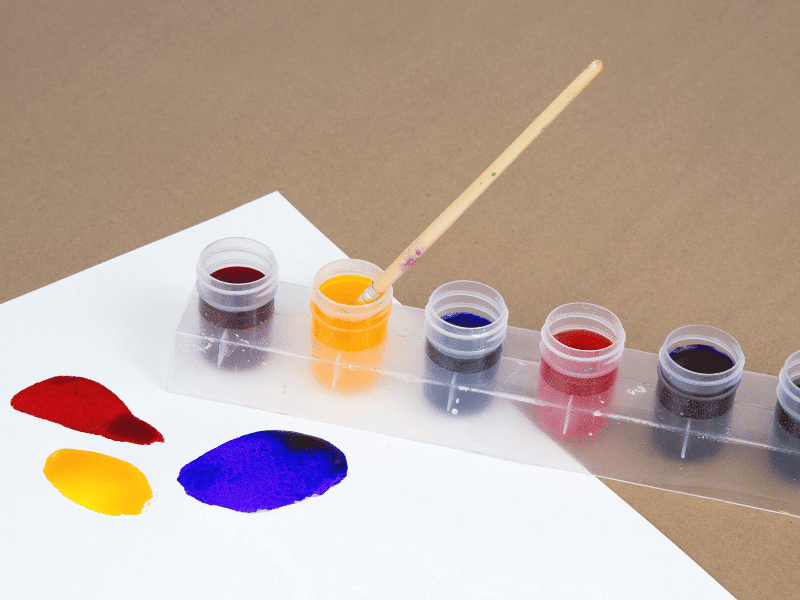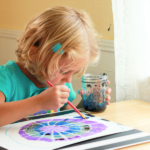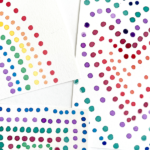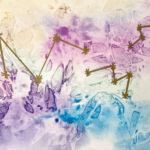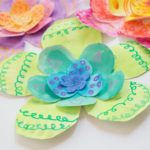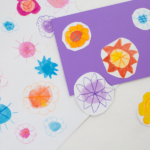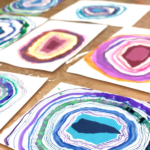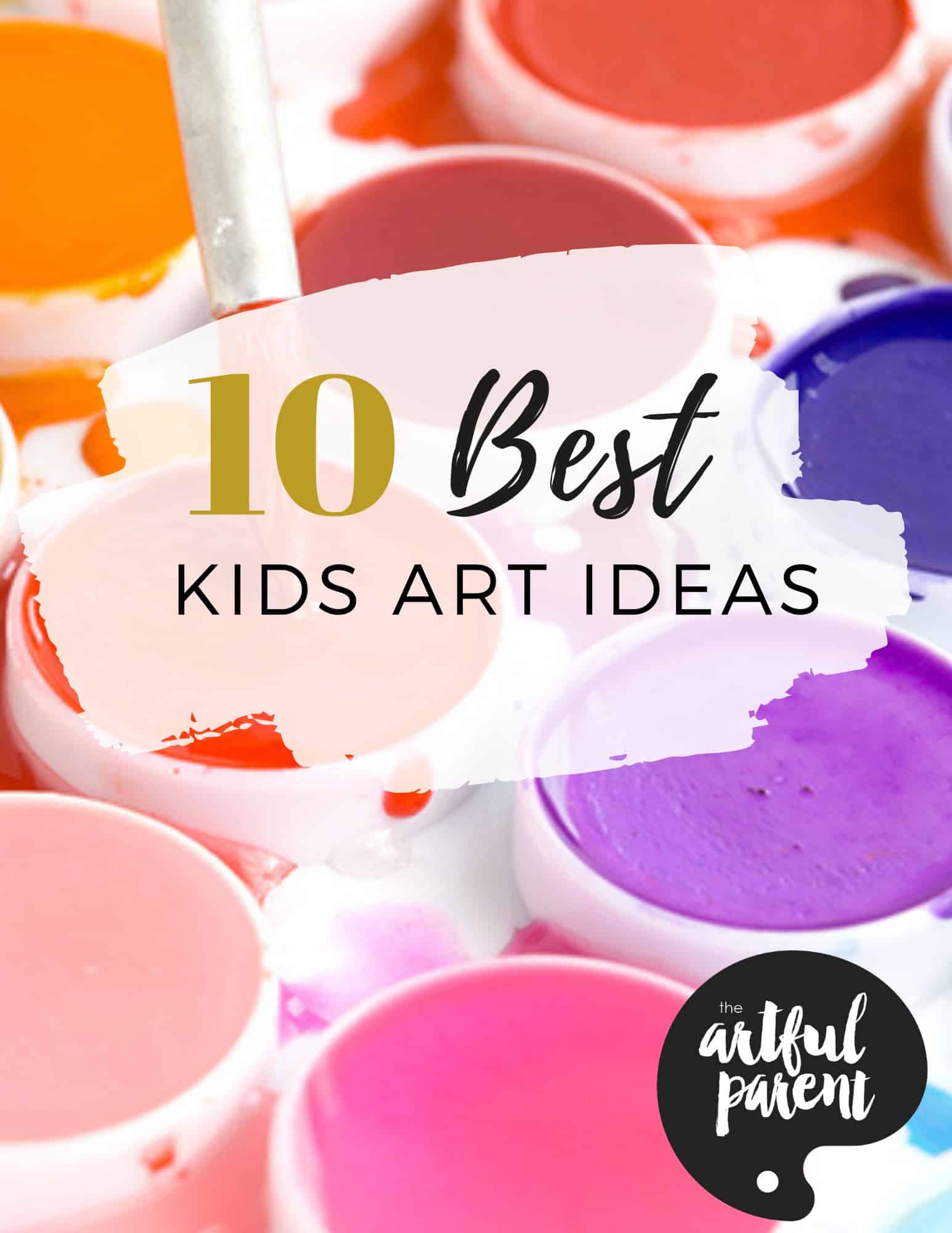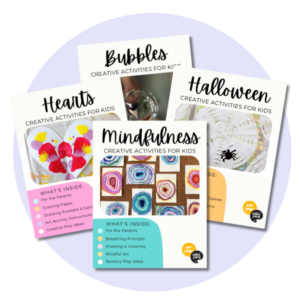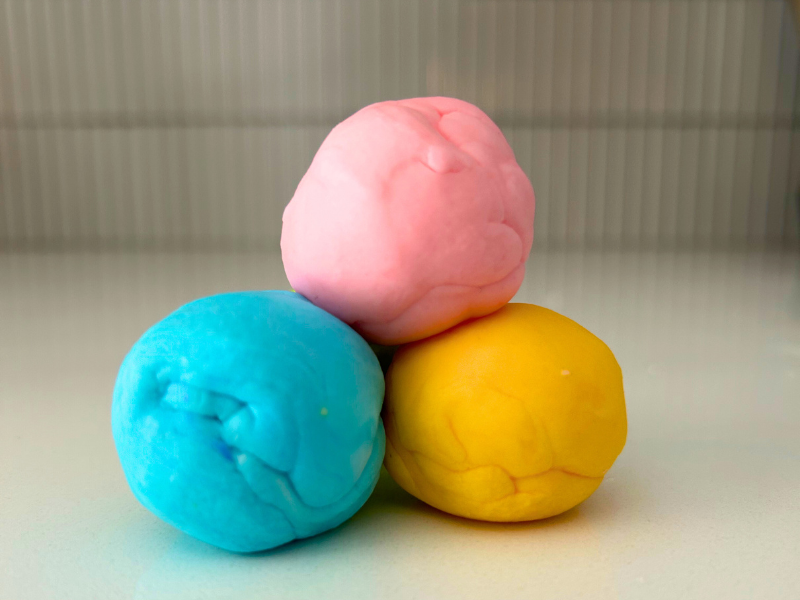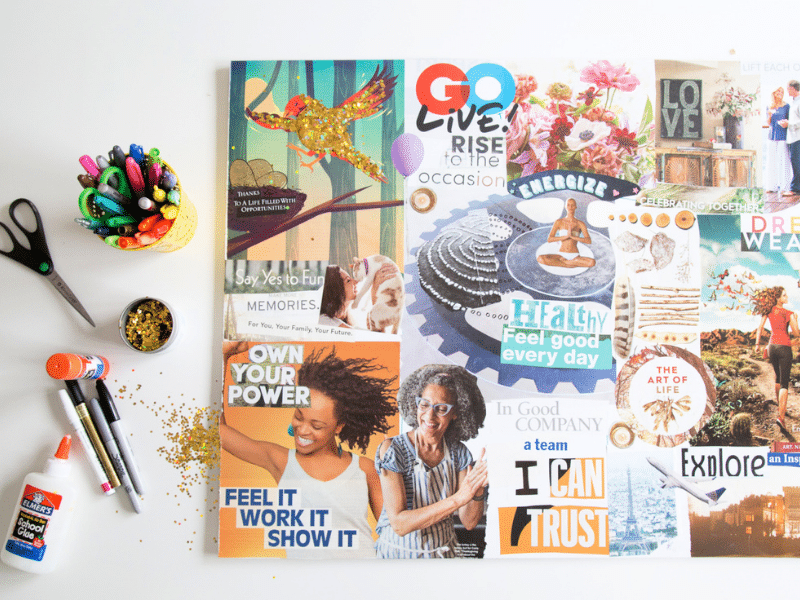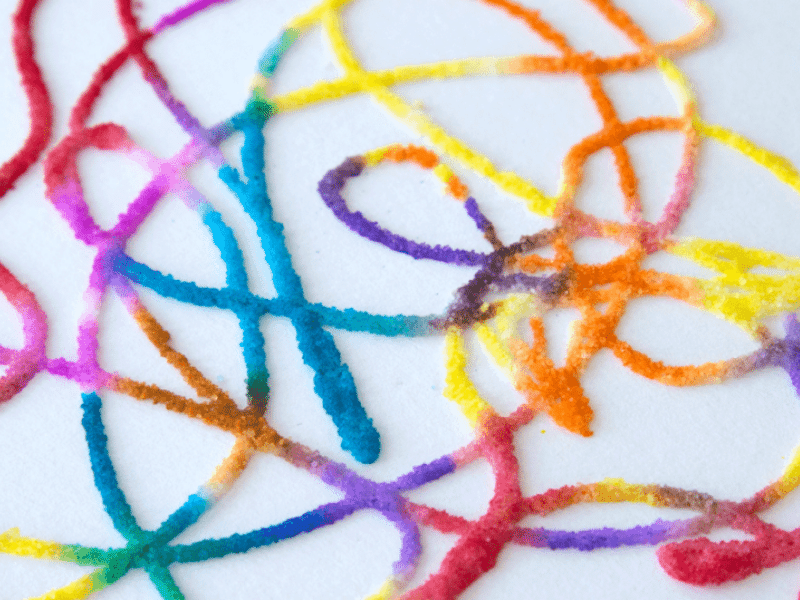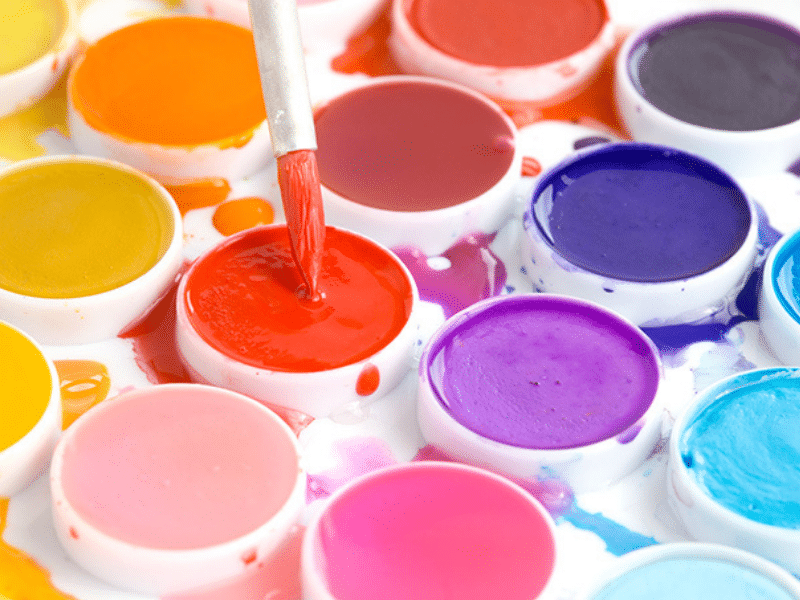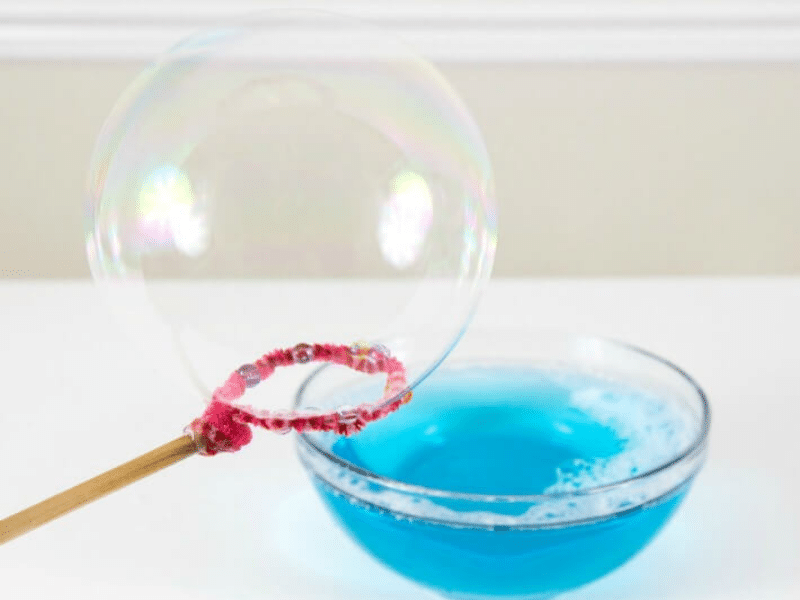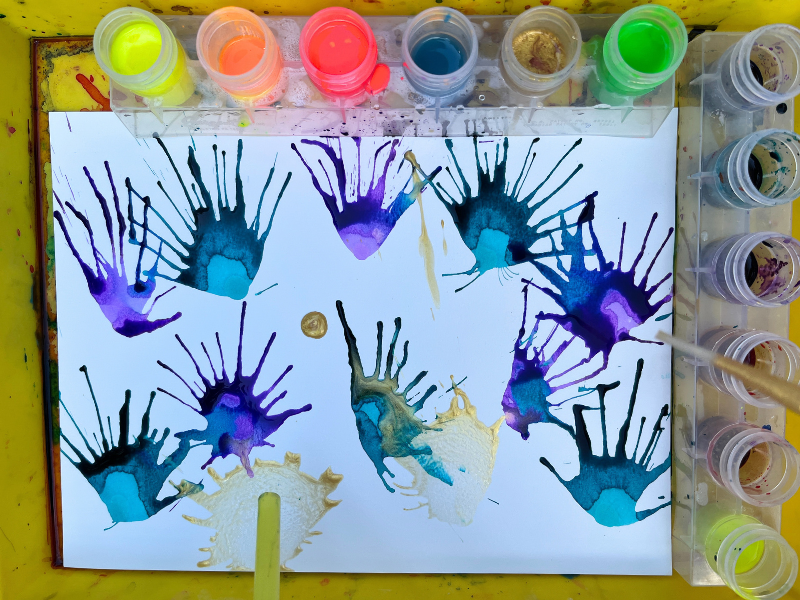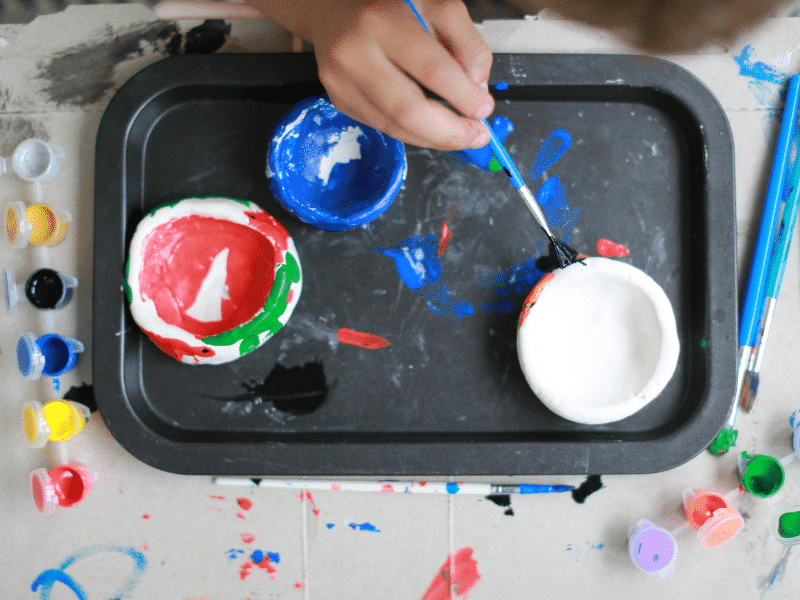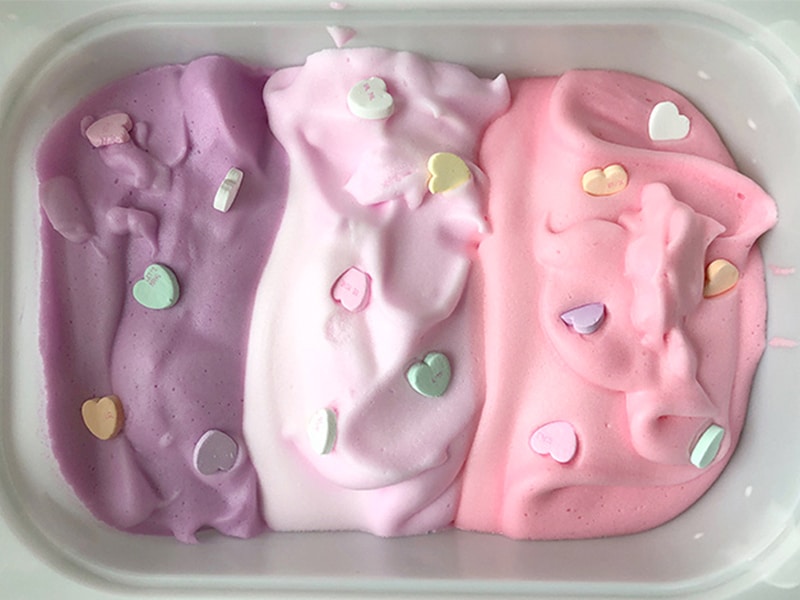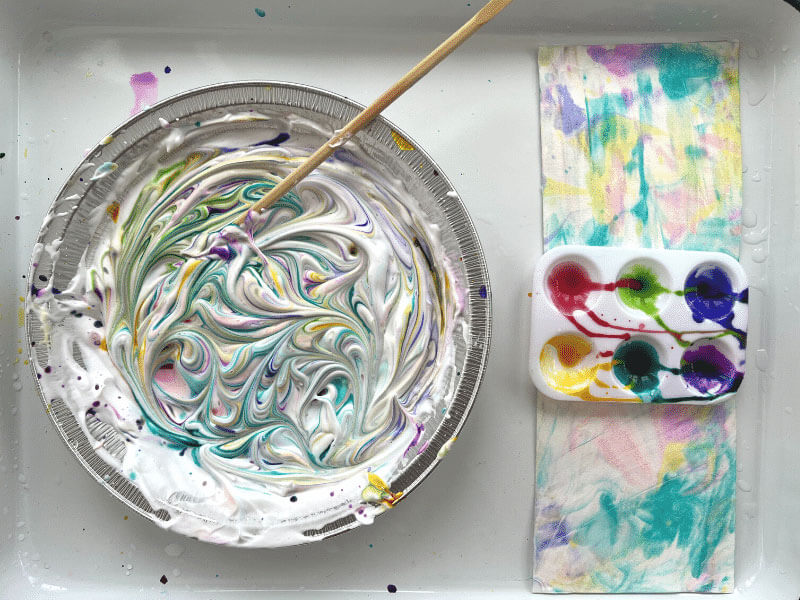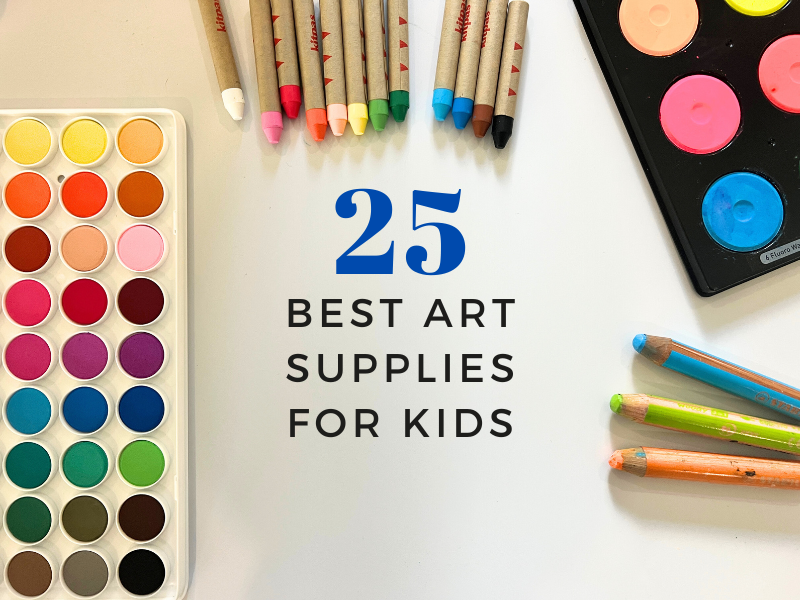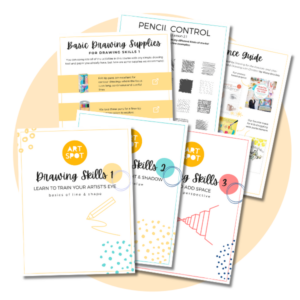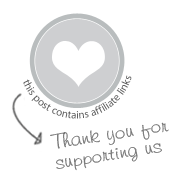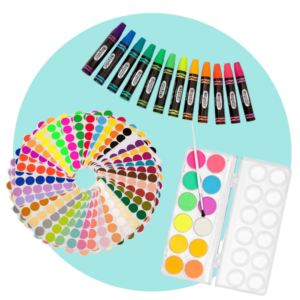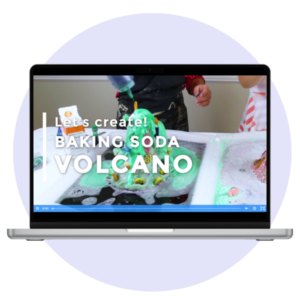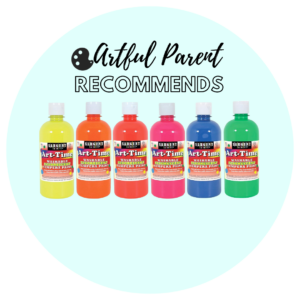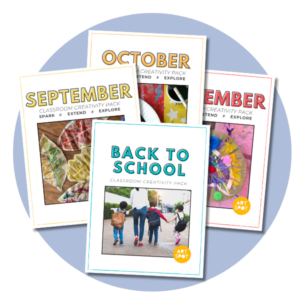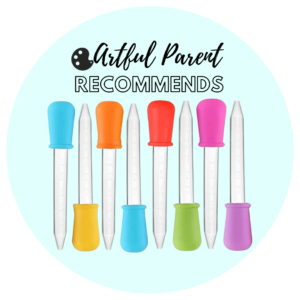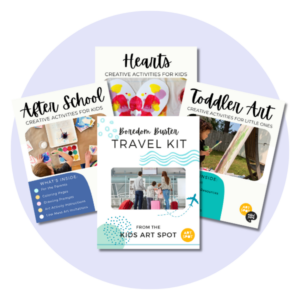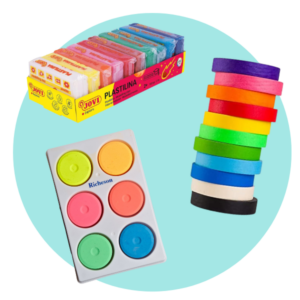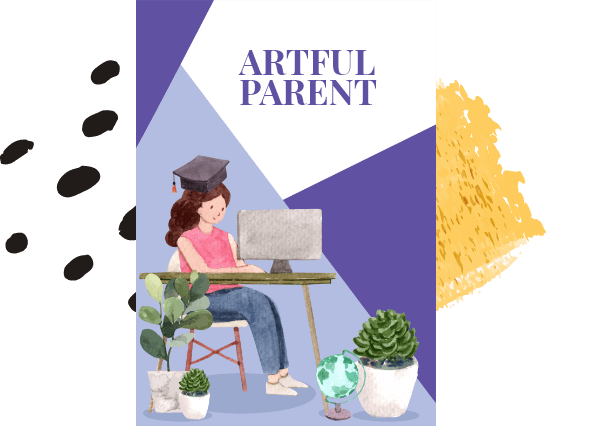These watercolor techniques for kids are exciting and interesting alternatives to basic watercolor painting. You’ll want to try all seven!
Updated August 2024
We love experimenting with different watercolor techniques, adding new twists to our favorite tools and techniques as well as trying out new ideas.
Our experiments include dropping and spreading the watercolors, adding rubbing alcohol and salt, using the watercolors with water and without, and painting on the light table.
But first, check out our notes about art materials we like to use for these watercolor techniques.
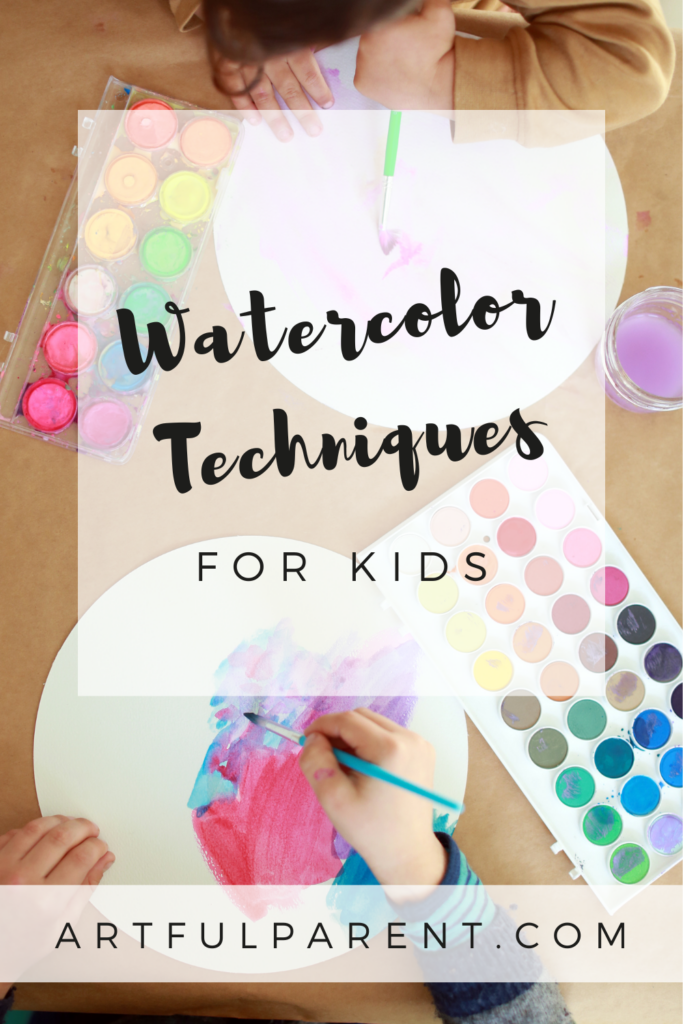
Our Favorite Watercolor Art Materials
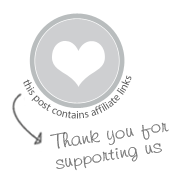
1. Watercolors
Liquid watercolor paints are one of our all-time favorite art materials and we use them most often when doing watercolor art projects.
You can also use a watercolor palette for watercolor painting and experimenting.
For more of our favorite paint recommendations see The Best Paints for Kids.
2. Paper
We typically use watercolor paper for these type of art activities. It really is the best for painting with watercolors because of the thickness and texture.
If you want even more information on paper, we have a whole post on choosing paper for children’s art.
3. Tools
The tools you see in this post include droppers, paint brushes
, small paint cups in a base
(not necessary, but inexpensive and helpful), and art trays
for protecting your work surface.
A few additional materials are fun to use with watercolors. Salt is likely already in your kitchen and rubbing alcohol in your bathroom cupboard, but both are also readily and inexpensively available at grocery stores and drug stores.
7 Watercolor Techniques for Kids
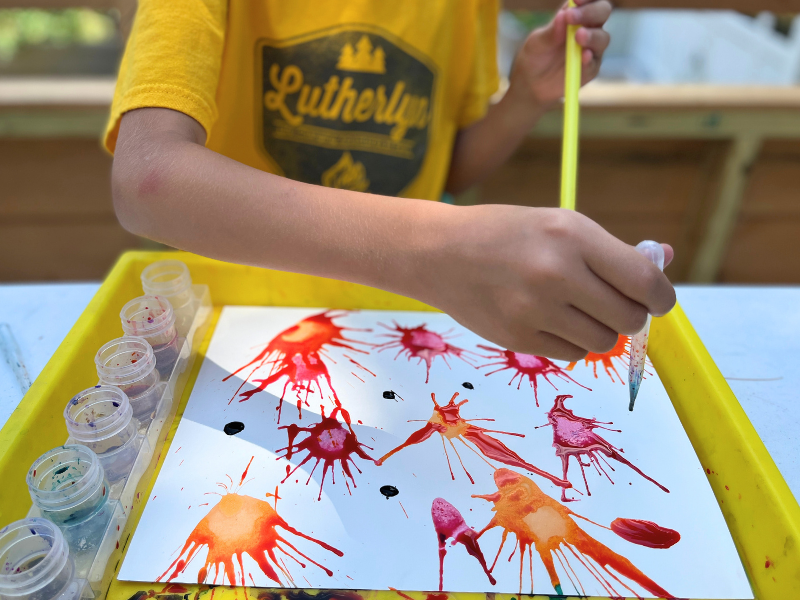
1. Blow Painting
Blow painting with straws is simple yet lots of fun for kids of all ages. Use a straw to blow liquid watercolors around on paper.
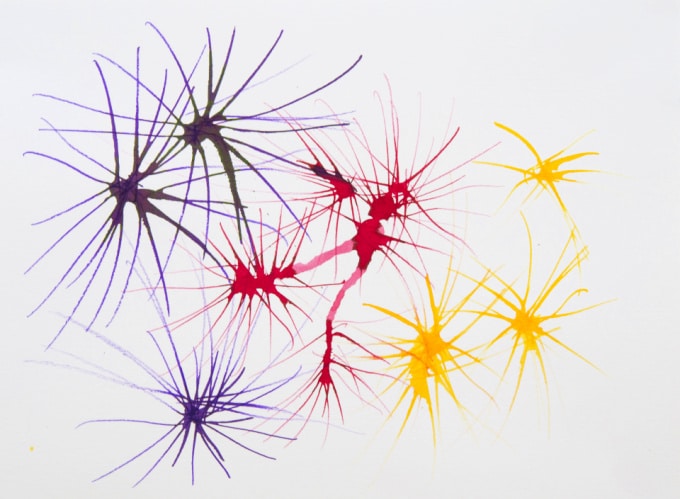
2. Make Watercolor Fireworks
Instead of using a straw to blow the paint around the paper, use a toothpick to create spikes and fireworks!
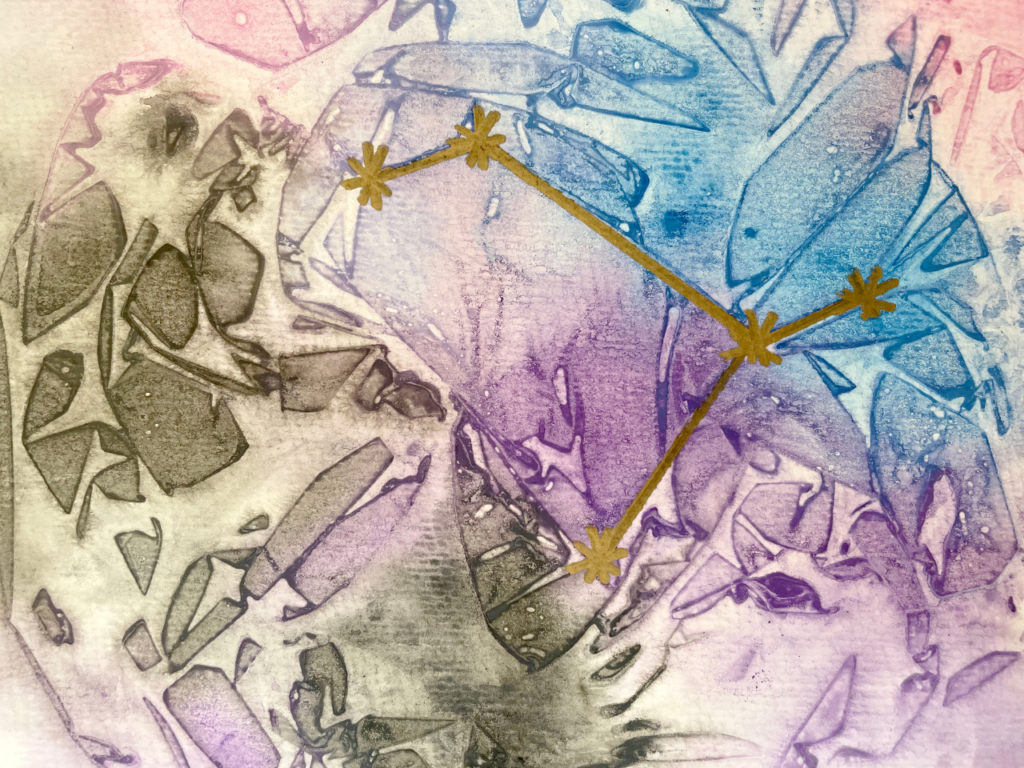
3. Watercolors + Plastic Wrap
This technique is simple but creates amazing designs. Paint with watercolors and then place scrunched up plastic wrap on the wet paint. The plastic wrap makes the paint dry in really cool geometric designs. You can extend the activity by doodling on and tracing the angled lines with metallic Sharpies or chalk markers.
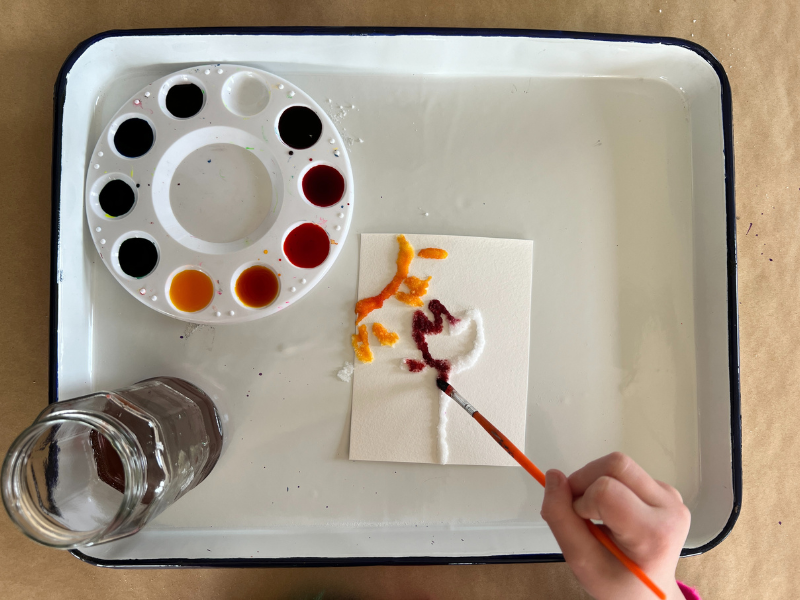
4. Raised Salt Painting
Glue, salt and watercolors are all you need for this simple and fun art activity. We do this one again and again and it’s always a hit!
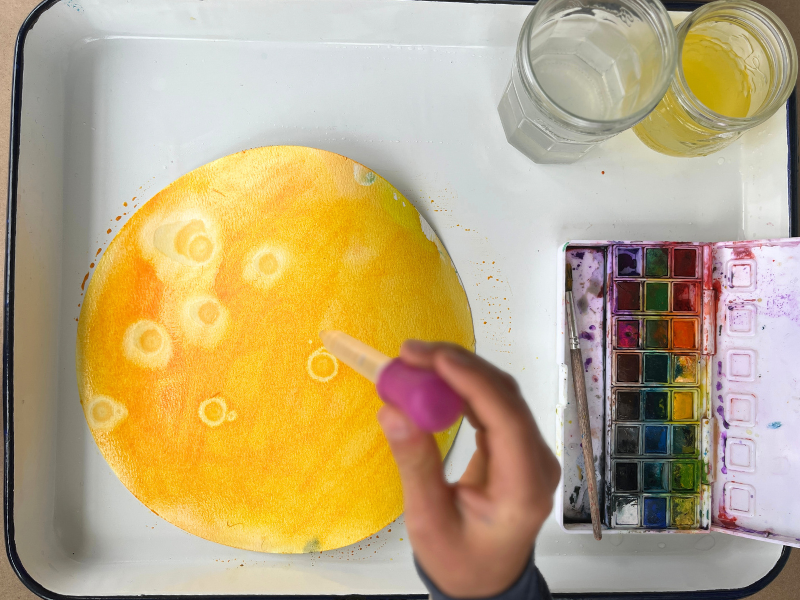
5. Watercolor with Rubbing Alcohol Designs
This one is one of our favorites! It was mesmerizing to watch the drops of rubbing alcohol react with the watercolor paint and create circular designs.
It is also a great technique to use when painting butterflies!

6. Watercolors + Salt
We’ve been sprinkling salt on our watercolor paintings for ages and love the designs it creates as the salt absorbs the water in the paint.
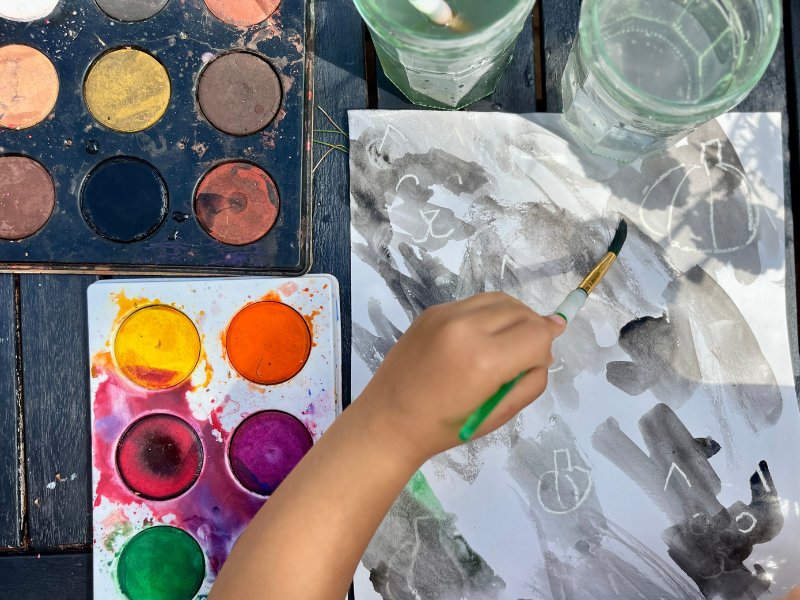
7. Watercolor Wax Resist
There are so many great watercolor resist techniques and we love them all. The easiest is wax resisit watercolors: simply draw on paper with crayons or oil pastels, and then paint over with watercolors and watch as the paint resists the wax!
Have you tried any of these watercolor techniques for kids yet?
More Watercolor Techniques for Kids
- 6 Amazing Watercolor Resist Techniques to Try With Kids
- Watercolor Resist Art with Young Children
- 3 Space Art Projects for Kids (with OOLY)
- How to Paint a Watercolor Geode
- How to Make Pointillism Art with Q-tips and Watercolors
- 11 Amazing Process Art Painting Activities for Preschoolers
Pin It For Later
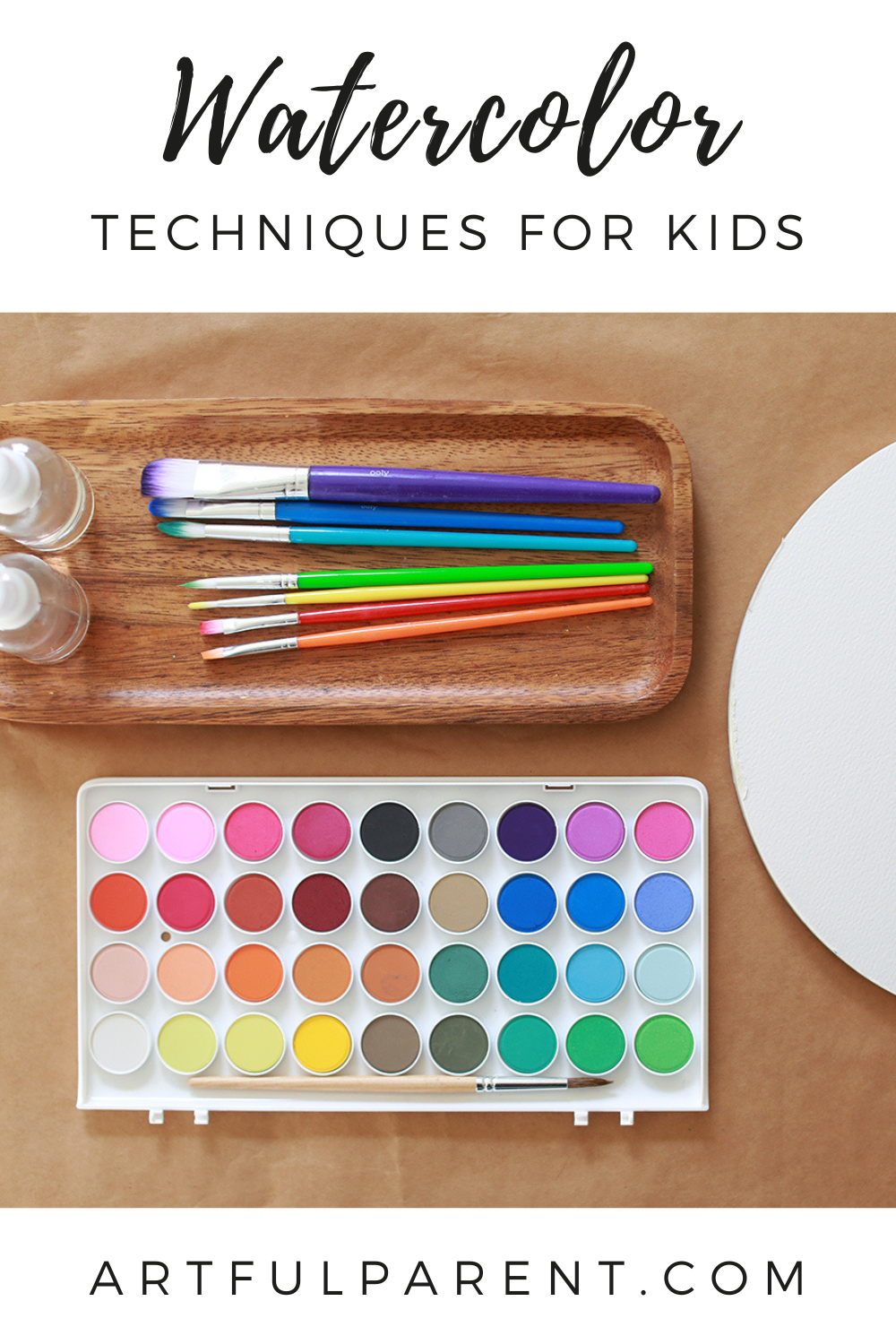



Related Posts
-
5 Easy Watercolor Ideas Using Resist Techniques
Watercolor resist techniques are so much fun for kids to explore! Here are 5 easy…
-
How to Do Pointillism Painting with Cotton Swabs
Pointillism painting with cotton swabs is engaging and fun art activity that easily incorporates an…
-
How to Do Plastic Wrap Painting with Watercolors
Geometric watercolor art is beautiful and easy to make with plastic wrap painting. Try this…
-
How to Make Flowers with Paper Plates
Create 3D watercolor flowers using paper plates with a few things you likely have at…
-
How to Paint Watercolor Flowers
Paint watercolor flowers for a fun and relaxing painting activity. Paint dots then add designs…
-
How to Paint a Watercolor Geode
Learn how to paint a watercolor geode in 5 easy steps! A wonderful watercolor painting…

